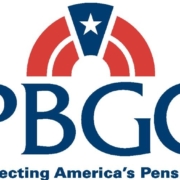 Print Friendly Version
Print Friendly Version
New Cash Out Limit—Mandatory or Not?
“SECURE Act 2.0 increased the plan cash-out limit to $7,000. Are plans required to apply the new limit?”
ERISA consultants at the Retirement Learning Center (RLC) Resource Desk regularly receive calls from financial advisors on a broad array of technical topics related to IRAs, qualified retirement plans and other types of retirement savings and income plans, including nonqualified plans, stock options, and Social Security and Medicare. We bring Case of the Week to you to highlight the most relevant topics affecting your business.
A recent call with a financial advisor in Utah is representative of a common inquiry involving plan cash outs.
Highlights of Discussion
This is a great question because there are several areas of confusion related to plan cash-out provisions. The following addresses the dollar thresholds associated with cash-outs or “mandatory distributions.”
First, qualified retirement plans are not required to have cash-out provisions at all. Internal Revenue Code (IRC) sections 411(a)(11) and 417(e) permit—but do not require—qualified plans to include provisions allowing for the immediate distribution of a separated participant’s vested benefit without the participant’s consent where the present value of the benefit is less than the statutory limit.
Plan sponsors can elect to add a provision to their plans to cash out small, vested benefit amounts up to the statutory limit when a participant terminates. These mandatory distributions can be paid out without the consent of the participant or his/her spouse, if applicable. The statutory limit in recent years has been up to $5,000, but Section 304 of the SECURE Act 2.0 increased the statutory limit to $7,000, effective for 2024 and later years.
Each plan has the option to set its own cash-out threshold within the prescribed limit (anywhere from $0 to $7,000 for 2024 and later years).The threshold must be written into the plan document. So, if a plan has a cash-out provision, the threshold could be any amount up to $7,000. Moreover, the anti-cutback rules do not apply to amendments adding or changing a plan’s cash-out threshold [Treas. Reg. §1.411(d)-4, Q&A-2(b)(2)(v)].
Plans with a cash-out level of less than $1,000 can issue a check for the amount to the participant. Plans that have a cash-out threshold of between $1,000 and the statutory maximum (now $7,000) must automatically roll over the distribution to an IRA established for the former employee, if the former employee does not make an affirmative election to have the amount paid in a direct rollover to an eligible retirement plan or to receive the distribution directly. Notice requirements apply. For additional information please see Notice 2005-5.
Conclusion
Qualified plans are not required to have cash-out provisions, but if they do, the details must be specified in the plan document. Each plan has the option to set its own cash-out threshold within the prescribed limit (anywhere from $0 to $7,000 for 2024 and later years).









